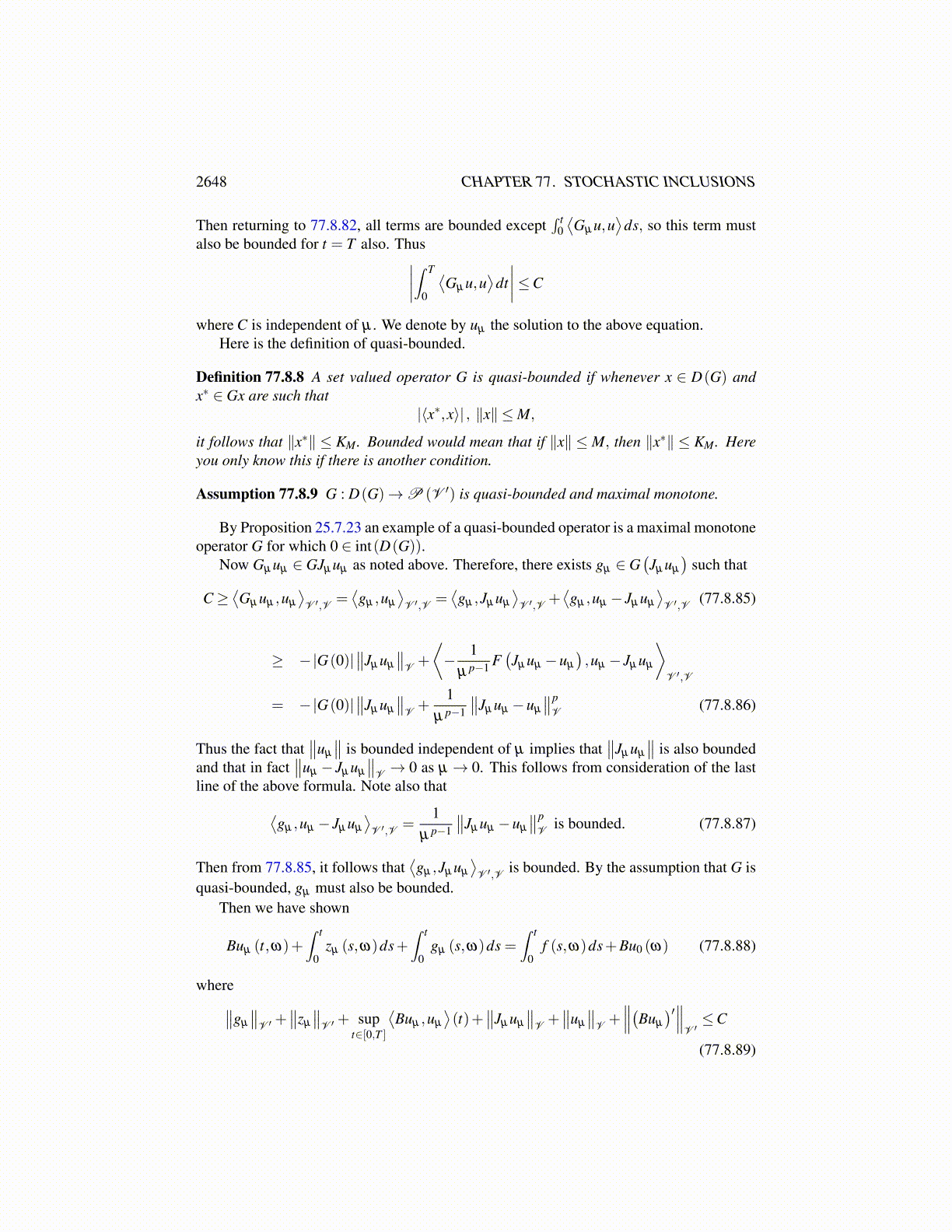
2648 CHAPTER 77. STOCHASTIC INCLUSIONS
Thus0≥
∣∣∥∥uµ
∥∥−∥u∥∣∣p−∥u∥p− pµ |G(0)|∥∥uµ
∥∥This requires that there is some constant C such that
∥∥uµ
∥∥≤C∥u∥+C. The details follow.Let a =
∥∥uµ
∥∥ ,b = ∥u∥ . Then they are both positive and
0≥ |a−b|p−bp−αa
where α = pµ |G(0)|. Want to say a ≤Cb+C for some C. This is the conclusion of thefollowing lemma.
Lemma 77.8.7 Suppose 0 ≥ |a−b|p− bp−αa for a,b ≥ 0 and α > 0. Then there existsa constant C such that
a≤Cb+C
Proof: If b ≥ a, then there is nothing to show. Therefore, it suffices to show that thedesired inequality holds for a > b. Thus from now on, a > b.
0≥ (a−b)p−bp−αa
Suppose a > nb+n. Let x = b/a. Then for x ∈ [0,1] ,
0 ≥ (1− x)p− xp−α1
ap−1
≥ (1− x)p− xp−α1
(nb+n)p−1
≥ (1− x)p− xp−α1
(n)p−1
Now for all n large enough, the right side is a decreasing function of x which is positive atx = 0 and negative at x = 1. Thus x corresponds to the place where this function is negative.Taking a limit as n→ ∞, it follows that we must have
x≥ δ , δ ∈ (0,1)
It is where (1− x)p− xp = 0. Thus x = ba ≥ δ . Then, since a > nb+n,
1δ
b≥ a > nb+n
Now this is a contradiction when n is taken increasingly large. Hence, for large enoughn,a≤ nb+n.
It follows that∥∥uµ
∥∥≤C∥u∥+C for some C. Hence,
∥∥Gµ u∥∥ ≤ 1
µ p−1
∥∥uµ −u∥∥p−1 ≤ 1
µ p−1
(∥∥uµ
∥∥+∥u∥)p−1
≤ 2p−2
µ p−1
(∥∥uµ
∥∥p−1+∥u∥p−1
)